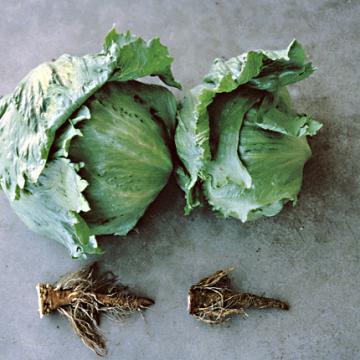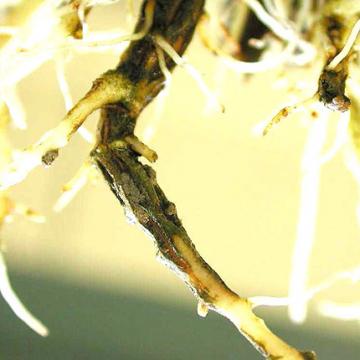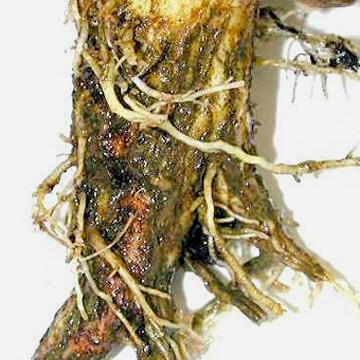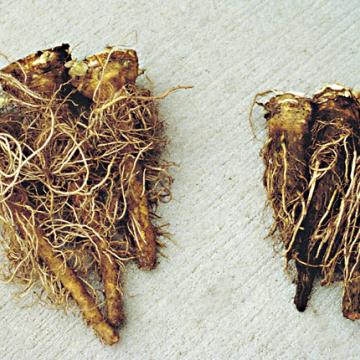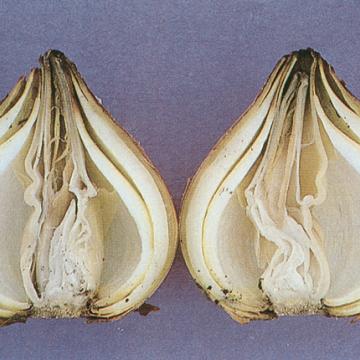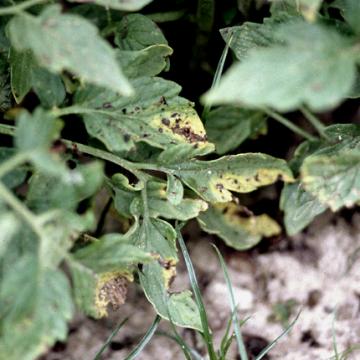DISEASE: Corky root
HOST: Lettuce
Corky root causes a reduction in size of lettuce heads and root systems; susceptible cultivar (right) and resistant cultivar (left).
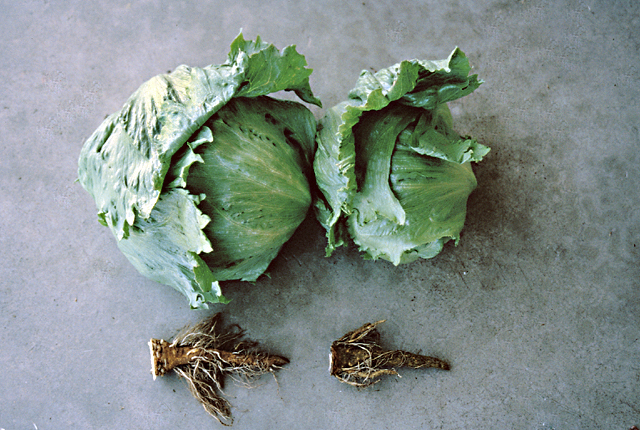
Corky root | Lettuce
DISEASE: Corky root
HOST: Lettuce (Lactuca sativa)
PATHOGEN: Sphingomonas suberifaciens
PATHOGEN SYNONYM: Rhizomonas suberifaciens
SOURCE: E. J. Ryder
DISEASE: Corky root
HOST: Lettuce
Close-up of root with malformed, corky appearance and longitudinal ridges of brown tissues.
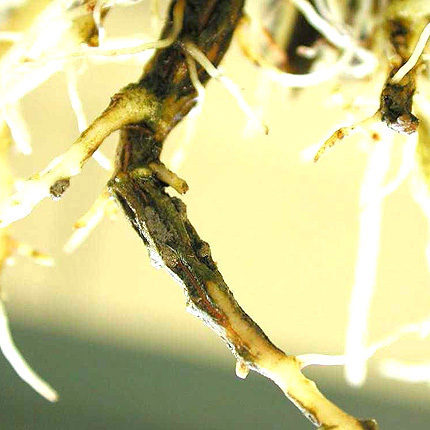
Corky root | Lettuce
DISEASE: Corky root
HOST: Lettuce (Lactuca sativa)
PATHOGEN: Sphingomonas suberifaciens
PATHOGEN SYNONYM: Rhizomonas suberifaciens
SOURCE: A. van Bruggen
DISEASE: Corky root
HOST: Lettuce
Initial symptoms of disease are yellow lesions on taproot and main laterals. Greenish brown bands occur around roots. Root pith may become brown and hollow.
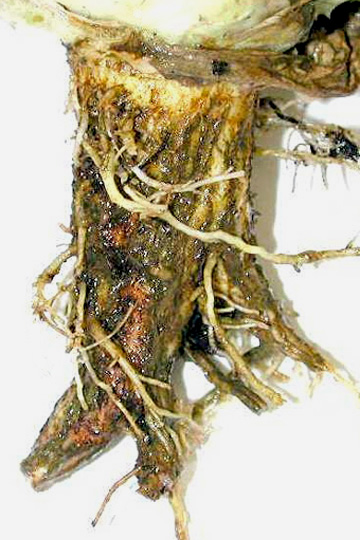
Corky root | Lettuce
DISEASE: Corky root
HOST: Lettuce (Lactuca sativa)
PATHOGEN: Sphingomonas suberifaciens
PATHOGEN SYNONYM: Rhizomonas suberifaciens
SOURCE: A. van Bruggen
DISEASE: Corky root
HOST: Lettuce
Differences in corky root symptoms between susceptible cultivar (right) and resistant cultivar (left).
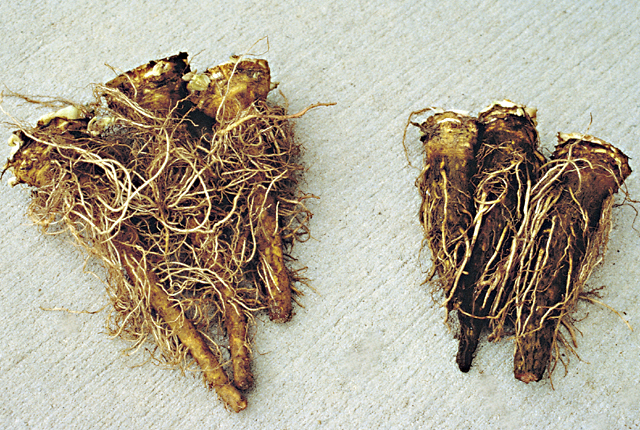
Corky root | Lettuce
DISEASE: Corky root
HOST: Lettuce (Lactuca sativa)
PATHOGEN: Sphingomonas suberifaciens
PATHOGEN SYNONYM: Rhizomonas suberifaciens
SOURCE: E. Ryder
DISEASE: Slippery skin
HOST: Onion
Rot progresses from the top of infected scales and eventually internal tissues rot. In early stages, the only external symptoms may be softening of the neck.
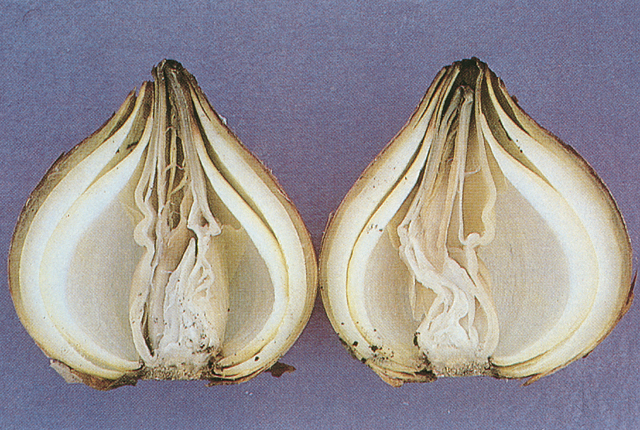
Slippery skin | Onion
DISEASE: Slippery skin
HOST: Onion (Allium cepa)
PATHOGEN: Burkholderia gladioli pv. alliicola
PATHOGEN SYNONYM: Pseudomonas gladioli pv. alliicola
SOURCE: H. Schwartz
DISEASE: Syringae leaf spot
HOST: Tomato
Leaves with brown necrotic lesions and chlorotic margins. Symptoms vary greatly among cultivars. Some have black or brown lesions with bright yellow, chlorotic areas and others do not have yellowing.
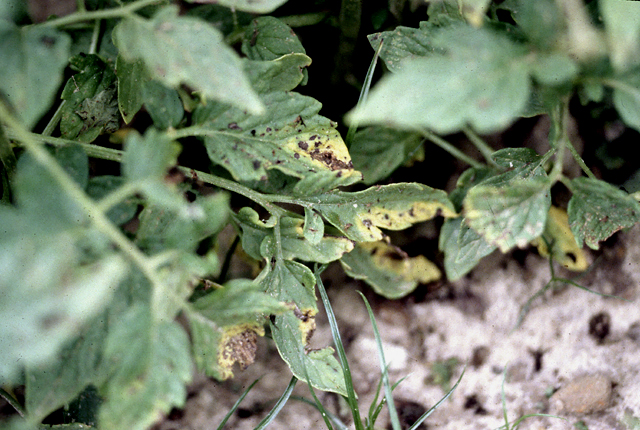
Syringae leaf spot | Tomato
DISEASE: Syringae leaf spot
HOST: Tomato (Lycopersicon esculentum)
PATHOGEN: Pseudomonas syringae pv. syringae
SOURCE: R. Gitaitis


